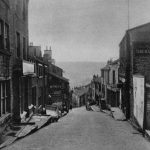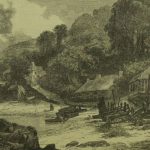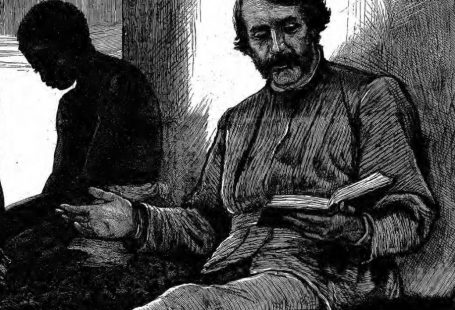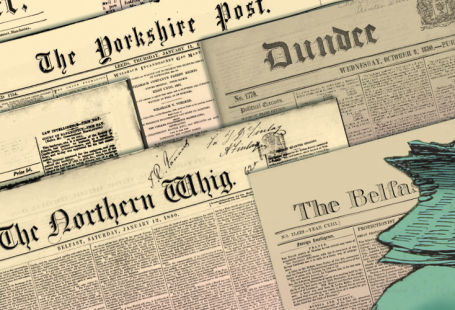This week at The Archive we are delighted to have added 109,910 brand new pages to our ever-expanding collection. We have two new titles this week, namely the Bradford Weekly Telegraph, which was known for the variety of illustrations it would carry, and its person of the week feature, and County Antrim title the Ballymoney Free Press and Northern Counties Advertiser.
Bradford Weekly Telegraph | 4 January 1890
Register now and explore the Archive
The Ballymoney Free Press and Northern Counties Advertiser was founded in 1863 and was edited by auctioneer Samuel C McElroy. McElroy was a key member of the Route Tenants’ Defence Association (RTDA), a group which campaigned for the rights of tenant farmers in The Route, a part of Country Antrim. The RTDA was hostile to the Land League, which aimed to help poor tenant farmers, believing the Land League to be too extreme. Meanwhile, the Ballymoney Free Press and Northern Counties Advertiser was a weekly title, and it ceased publication on 1 November 1934.
Ballymoney Free Press and Northern Counties Advertiser | 15 March 1900
We also have extensive updates to our existing titles, covering England, Wales and Scotland. This also includes updates to our very special cinema title The Bioscope. First published by Archibald Hunter in 1908, this title was aimed at those in the newly-developing cinematic industry. Awash with illustrations and photographs of the latest films, The Bioscope is a wonderful record of the early years of cinema.
Other highlights from our updated newspapers are the extensive run of pages we have added to the Blyth News, a Northumberland weekly which is now part of the News Post Leader. We have also added nearly 25,000 pages to the Kent & Sussex Courier. Published in Tunbridge Wells, the Kent & Sussex Courier covers East Sussex, and the west part of Kent.
We also continue to strengthen our collection of Welsh newspapers. We have added new pages to the Brecon County Times, the oldest newspaper in Breconshire, as well as to the South Wales Gazette, to which we have added the year 1896. We’ve not neglected our Scottish newspapers either, with new pages from the 1970s joining the Aberdeen Evening Express.
Frankenstein on Film
110 years ago one of the world’s first horror films was released by Edison Studios, an adaptation of Mary Shelley’s 1818 novel Frankenstein. The 5 May 1910 edition of The Bioscope gives a summary of the new silent film, commenting that it possesses a ‘peculiar psychological force.’ The article gives the following description of Frankenstein meeting the monster he created:
…there is unfolded before his eyes an awful, ghastly monster, which leers and peeps at Frankenstein through the curtains. The awful spectacle of the monster proves too much for Frankenstein, who falls ill, and returns to his home.
In this version of the story, the monster follows Frankenstein to his home, where he is about to marry his fiancée. The monster, ‘insanely jealous,’ attacks his creator, before he is forced to confront his own ‘horrible image’ in the mirror.
The story of Frankenstein was to provide rich inspiration in the early days of film. Life Without Soul, a now lost horror film, appeared in 1915, and deals with a doctor who creates a soulless being. A further Italian adaption was to follow in 1920 (Il mostro di Frankenstein – The Monster of Frankenstein). Under Benito Mussolini horror films were strictly forbidden, and so there are very few Italian horror films from the silent era.
Colin Clive and Boris Karloff as Frankenstein and his monster | The Graphic | 16 January 1932
And in 1931 perhaps one of the most famous Frankenstein film adaptations was released. Starring Colin Clive as Frankenstein, and Boris Karloff as the monster, The Bioscope printed a rather disparaging review of the film:
Unsuitable for the family houses, this film will grip the unsophisticated and less squeamish of patrons. ‘Frankenstein’ the film is anything but a classic in filmcraft. As a rather crudely constructed blood-curdler it will certainly thrill those who find their pleasures in things morbid and horrible.
Despite The Bioscope’s doubts, Frankenstein was well-received by audiences, and as such permeated into popular culture. And several months later, the journal reports how Frankenstein ‘grossed $44,000 in its first week at the State Lake Theatre, Chicago (comparing with an average of $30,000).’
The Bioscope | 30 December 1931
Indeed, in a true reversal, The Bioscope is keen to stress the British links to the film, with Boris Karloff described as ‘one of the three prominent Englishmen’ in the film – and resulting from the film’s success, he had been given a two year contract with Universal. Frakenstein was also made by an Englishman – James Whale.
Boris Karloff went on to appear twice more as Frankenstein’s monster, as well as in many other horror films, and was awarded two stars on Hollywood’s Walk of Fame.
New Titles
Title | Years Added |
| Bradford Weekly Telegraph | 1882-1896, 1898-1899, 1901-1910, 1912-1917 |
| Ballymoney Free Press and Northern Counties Advertiser | 1870, 1873-1934 |
Updated Titles
This week we have updated twelve of our existing titles.
You can learn more about each of the titles we add to every week by clicking on their names. On each paper’s title page, you can read a FREE sample issue, learn more about our current holdings, and our plans for digitisation.
Title | Years Added |
| Burton Chronicle | 1898, 1901-1906 |
| Brecon County Times | 1871 |
| Truth | 1885, 1895 |
| Freedom (London) | 1906-1927 |
| Halifax Evening Courier | 1900, 1910 |
| Blyth News | 1874, 1894, 1905-1908, 1910, 1912-1930, 1940-1950 |
| Western Evening Herald | 1897 |
| The Bioscope | 1908, 1910 |
| Brighouse News | 1897 |
| Aberdeen Evening Express | 1972-1974 |
| South Wales Gazette | 1896 |
| Kent & Sussex Courier | 1966-1976, 1978 |
You can keep up to date with all the latest additions by visiting the recently added page. You can even look ahead to see what we’re going to add tomorrow.













